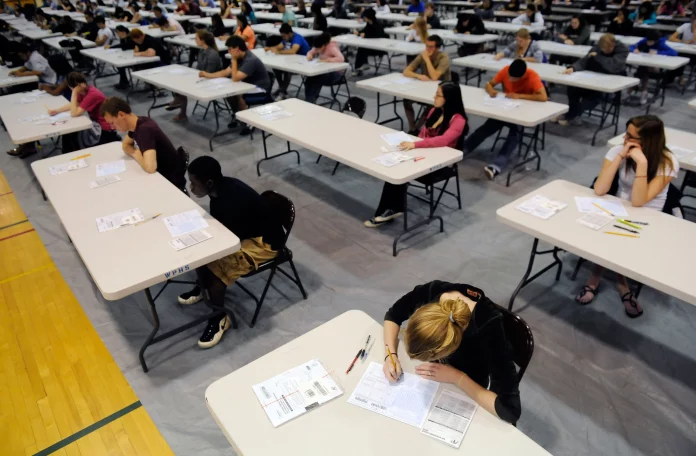Over the past 20 years, Advanced Placement (AP) classes have come to play a large role in the American high school experience. It’s estimated that about 35% of high school students in the US take at least one AP class. Today, the College Board offers AP exams in 39 subjects and has millions of test takers both nationally and internationally.
The AP program was initially created during the Cold War to address the fear of American students falling behind and being unprepared to pursue higher education. The Fund for Advancement of Education (FAE) investigated college freshmen at Yale, Harvard, and Princeton and found the classes they were taking were essentially a review of their high school courses. The idea of high-achieving high schoolers proving their understanding in a subject area materialized into the first set of AP exams.
In 1954, 530 students from 27 selected schools took AP exams through a pilot program by the Educational Testing Service (ETS). The students were scored on a scale of 1 to 5, and the test scores from this batch of students confirmed that some American high schoolers were capable of excelling in college-level coursework. The following year, as the ETS continued to create and score the exams, the College Board took administrative control of the AP program. In May of 1956, the first national AP exams were carried out. For a single $10 fee, students could take any exam they wanted in mathematics, physics, chemistry, biology, literature, English composition, French, German, Spanish, and Latin.
Historically, Oakland Tech has administered 16 AP exams per year within the science, humanities, mathematics, technology, and art subject areas. Out of the 1,832 students enrolled at Tech in the 2021-22 school year, 616 took at least 1 AP class (34%). Of those students, 56% scored a 3 or higher. Although college credit for an AP course is usually only given to scores of 4 or 5, a 3 still demonstrates an advanced level of understanding. In the data provided by OUSD, there is also a breakdown of the stats for each academy at Tech. The Computer Science Academy had 191 students take at least 1 AP exam last year, and 45% passed with a 3 or higher. They were followed by the Engineering Academy, which had 90 students take at least 1 AP exam and a 41% pass rate. The other academies had lower numbers of students (40-70) taking at least 1 AP exam and even lower pass rates (12-17%).
This year, 45% of the students at Tech will take at least 1 AP exam in May. The most common challenge that AP teachers at Tech face is the block schedule. The new schedule shifts every teacher’s 265 instructional minutes per week to 225. The 40-minute difference per week builds up to a loss of 17 hours per class every school year. While many AP students have valid complaints about the fast pacing of many of their classes, the block schedule makes it harder to make lesson plans that cover everything on the AP exam. A junior comments on this, “Teachers teach at different paces so you can’t collaborate or study with friends with a different teacher.” While some teachers rush through the less important topics, others find parts of their curriculum to cut out or end up creating an independent study-like class.
While the AP Program has seen much success over the years, it has also received just as much criticism. Not only does the $94 fee per exam discourage financially challenged students from enrolling in AP courses, but AP classes are often more successful when implemented at schools with more resources (better teachers, smaller class sizes, quality materials, etc.). Schools with high-performing students that lack resources often see lower scores. Among these problems lies a larger issue. Many educators and students feel that the current AP course curriculum for many subjects doesn’t effectively cover the actual subject. The number of topics and ideas that students are expected to learn has led to AP classes skimming through the material and prioritizing surface-level understanding over in-depth comprehension. However, many schools can’t afford to address this issue or leave the AP Program behind. For many lower-income public schools, AP courses are one of the few ways for students to show their aptitude and build a competitive college application. Although they’re a good way to push ahead, AP classes and exams don’t wholly depict anyone’s academic capabilities or intellect.
